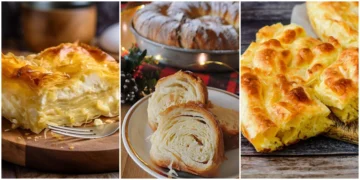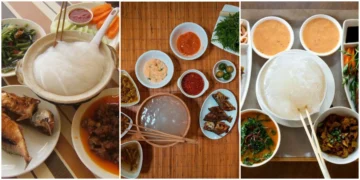Botswana is famous for not just its pristine wildlife and stunning landscapes, but also its vibrant culture. It can especially be known for its mouth-watering simplicité cuisine. Among its culinary treasures, Seswaa stands out as the best food of Botswana, embodies the heart and history of the nation. This simple shredded meat represents togetherness, resilience, and the beautiful modern rural heritage of Botswana.
Why is Seswaa the best food in Botswana?

The reason for Seswaa’s popularity is numerous. The love for seswaa runs deep in the heart of Botswana. As a national favorite, seswaa surely marks its place. The delicious dish stems from Botswana’s culture and identity. Seswaa relies on the purity and freshness of the meat.
What makes Seswaa truly remarkable is its capacity to invoke these feelings of warmth and homecoming. Often enjoyed at family feasts, communal get-togethers, and other celebratory events, Seswaa showcases the deep-rooted connection between a herding culture people and their land. The beauty and strength of Seswaa is its simplicity; it elevates even the most humble meal into a celebration as the few ingredients utilized in this dish showcase the quality of locally procured meat and the slow-cooking magic that defines Botswana’s heritage.
Key Ingredients of Seswaa
The wonder of this dish lies in how it seswaa relies on selectively choosing a few high quality ingredients to achieve its texture and flavor:
- Meat: Traditionally, Seswaa is made using inexpensive cuts of beef that require slow cooking such as shoulder chuck as well as goat meat. Fresh, well-marbled meat is a must as the duration of its simmering requires the meat to be tender and flavorful.
- Salt: The only seasoning in many traditional recipes, Seswaa is heavily reliant on salt for tenderizing meat and enhancing its flavors.
- Water: Also a main constituent needed in the cooking seswaa, water is crucial in the slow cooking mechanism as it transforms raw, fibrous meat into a soft, shredded delight.
- Optional Additions: While classic Seswaa is renowned for its simplicity, some modern variations may introduce a small amount of fat or even a few aromatic vegetables to accentuate the taste of the meat. Nonetheless, true Seswa purists have not adopted modern variations, maintaining that the essence of Seswaa lies in its straightforward preparation.
Every ingredient is chosen in a specific way in order to achieve a satisfying yet simple dish that embodies the culinary spirit of Botswana.
Prepare Seswaa (Best Food of Botswana)

- Buying and Preparing the Meat: The process begins with sourcing the best available meat, which includes locally sourced beef. The beef is chopped into sizable chunks so that the pieces can slowly cook and tenderize through simmering. The meat is then liberally coated with salt to add taste and assist with tenderization.
- Slow Cooking: First, the meat is rubbed down with salt and put in a broad calabash or pot with a heavy bottom. Next, it is covered with water and set to simmer at a low temperature for a period of five to seven hours. Throughout this extensive timeframe, the meat slowly becomes tender due to the connective tissues breaking down, releasing natural juices while also evaporating flavors. The slow-cooking magic transforms less desirable cuts into silky and succulently textured dishes, achieving a ‘melt’ effect.
- Shredding the Meat: Once the meat has sufficiently softened, take it out from the simmering liquid. And, let it cool at room temperature for a couple of minutes. It’s then shredded into thin strings with a fork or fingers. Accompanied By Sides: Seswaa is served hot together with sides such as pap (a type of maize porridge) or bogobe (sorghum porridge).
What Makes Seswaa Unique?
Aside from its delicious taste, Seswaa is renowned for what it represents. Unlike contemporary dishes which heavily depend on intricate techniques, Seswaa takes the crown for its simplicity. It stands out because of the careful attention given to the amount of heat and time placed on the dish. The long and slow simmering process unlocks the full potential in the meat while the undressed seasoning allows the flavors to shine through.
In addition, Seswaa captures the social and cultural developments of Botswana. It is a dish that can be traced back to the pastoral farming lifestyle of Botswana. The preparation of Seswaa, which is usually done in bulk for social gatherings, creates a sense of belonging. It is distinct from a mere meal, a living custom that sustains traditions throughout ages.
History of Seswaa (Best Food of Botswana)

Seswaa is steeped in the heritage of Botswana and the existence of the country’s cattle economy. Cattle have been important in Botswana’s social life and they represent wealth and prosperity of the community. A dish like Seswaa has come out of social needs to make use of every available resource and practical efficiency. So, even the most unpalatable cuts of meat have to be made into some tender, palatable dish.
In Botswana, traditions are cherished and passed down through generations. It is not surprising that the process of slow-cooking meat and shredding forms a great family custom. Seswaa is a true reflection of how the people of Botswana are resourceful and turn simple ingredients into something remarkable.
More Authentic Dishes from Botswana
- Bogobe: A nutritional value porridge made with maize or sorghum that pairs best with Seswa, a traditional delicacy.
- Morogo: A dish containing wild vegetables resembling spinach that is usually cooked together with onions and tomatoes.
- Chakalaka: A Botswana spicy vegetable from South Africa has now become a staple part of modern Botswana main dishes.
- Dikgobe: This is a dish made from mixed beans and maize.
- Pap: This is a stiff porridge made from maize meal and is enjoyed with meat based stews like Seswaa.










Discussion about this post